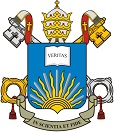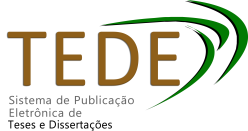| Compartilhamento |


|
Use este identificador para citar ou linkar para este item:
http://tede2.pucgoias.edu.br:8080/handle/tede/1849Registro completo de metadados
| Campo DC | Valor | Idioma |
|---|---|---|
| dc.creator | Lemos, Gardenia de Souza Furtado | - |
| dc.creator.Lattes | http://lattes.cnpq.br/5256022146155040 | por |
| dc.contributor.advisor1 | Campos, Pedro Humberto Faria | - |
| dc.contributor.referee1 | Günther, Hartmut | - |
| dc.contributor.referee1Lattes | http://buscatextual.cnpq.br/buscatextual/visualizacv.do?id=K4781923D3 | por |
| dc.contributor.referee2 | Mendonça, Helenides | - |
| dc.contributor.referee2Lattes | http://buscatextual.cnpq.br/buscatextual/visualizacv.do?id=K4707337D2 | por |
| dc.date.accessioned | 2016-07-27T14:20:26Z | - |
| dc.date.available | 2006-08-18 | - |
| dc.date.issued | 2004-02-27 | - |
| dc.identifier.citation | LEMOS, Gardenia de Souza Furtado. METRO TRANSPORTATION SYSTEM IN GOIANIA: A STUDY OF THE SOCIAL REPRESENTATIONS. 2004. 104 f. Dissertação (Mestrado em Ciências Humanas) - Pontifícia Universidade Católica de Goiás, Goiânia, 2004. | por |
| dc.identifier.uri | http://localhost:8080/tede/handle/tede/1849 | - |
| dc.description.resumo | Este trabalho objetivou tratar a questão do trânsito como uma prática social complexa, e teve a intenção de levantar e analisar o sistema cognitivo engendrado por essa prática em motoristas de transporte coletivo convencional e transporte alternativo na cidade de Goiânia. Assim, preocupou-se em conhecer o sistema representacional que orienta e justifica as suas práticas de condução. O impacto esperado deste trabalho foi de contribuir para um modelo psicossocial de estudo do trânsito, especificamente do transporte coletivo, conhecendo melhor como esses grupos representam a realidade. A estrutura de transporte coletivo de Goiânia é constituída pelo sistema convencional de transporte coletivo, cujo veículo utilizado é o ônibus, e por um sistema alternativo de transporte coletivo, que utiliza microônibus. Para conhecer as representações desses grupos sobre o trânsito e alguns fatores a ele relacionados, realizou-se uma pesquisa metodologicamente orientada pela Teoria do Núcleo Central das Representações Sociais. Foi aplicado um questionário em 103 (cento e três) sujeitos motoristas de ônibus e em 118 (cento e dezoito) sujeitos motoristas de microônibus da cidade de Goiânia e região metropolitana. Os resultados indicaram que os dois grupos têm uma representação centrada na idéia de tumulto e stress e uma visão negativa do comportamento dos outros motoristas. Contudo, essas representações são diferentes quando se analisa o significado atribuído aos elementos que supostamente compõem o núcleo central, ilustrando, como é diferente a situação do trânsito para os dois grupos entrevistados. | por |
| dc.description.abstract | The purpose of this study is to deal with the traffic issue as a complex social practice, and its intention is to raise and analyze the cognitive system produced by this practice on bus drivers of the conventional and alternative transportation metro system in the city of Goiania. Therefore, the study searched for the representative system that orients and justifies its conduction practices. The expected impact of this study was the contribution of a psychosocial model of traffic study, specifically of the metro transportation, thus, getting to know better how these groups represent reality. The metro transportation structure of the city of Goiania is constituted by the conventional system of metro transportation, where the vehicle used is the bus, and by one alternative metro system, that uses the microbus. To get to know the traffic representations of these groups and some particulars related to them, it was made a research which was methodologically oriented by the Theory of the Central Nucleus of the Social Representations. It was applied a questionnaire to 103 (one hundred and three) bus drivers and to 118 (one hundred eighteen) microbus drivers of the city of Goiania and its metropolitan region. The results indicated that both groups have a representation centered on the idea of tumult and stress , and a negative view of the behavior of others drivers. However, these representations are different when it is analyzed the meaning given to the elements that supposedly compose the central nucleus, which can illustrate the different work situation in the traffic of both groups interviewed. | eng |
| dc.description.provenance | Made available in DSpace on 2016-07-27T14:20:26Z (GMT). No. of bitstreams: 1 Gardenia de Souza Furtado Lemos.pdf: 563104 bytes, checksum: e4de4fec8d54b9b6e10cbfb8819307b0 (MD5) Previous issue date: 2004-02-27 | eng |
| dc.format | application/pdf | por |
| dc.thumbnail.url | http://localhost:8080/tede/retrieve/5503/Gardenia%20de%20Souza%20Furtado%20Lemos.pdf.jpg | * |
| dc.language | por | por |
| dc.publisher | Pontifícia Universidade Católica de Goiás | por |
| dc.publisher.department | Ciências Humanas | por |
| dc.publisher.country | BR | por |
| dc.publisher.initials | PUC Goiás | por |
| dc.publisher.program | Programa de Pós-Graduação STRICTO SENSU em Psicologia | por |
| dc.rights | Acesso Aberto | por |
| dc.subject | Psicologia do Trânsito | por |
| dc.subject | Representação Social | por |
| dc.subject | Transporte coletivo Goiânia | por |
| dc.subject | Psicologia Social | por |
| dc.subject | Trânsito | por |
| dc.subject | Traffic Psychology | eng |
| dc.subject | Social Representation | eng |
| dc.subject | Goiania s Metro Transportation System | eng |
| dc.subject | Social Psychology | eng |
| dc.subject | Goiania s traffic | eng |
| dc.subject.cnpq | CNPQ::CIENCIAS HUMANAS::PSICOLOGIA | por |
| dc.title | TRANSPORTE COLETIVO EM GOIÂNIA: UM ESTUDO DAS REPRESENTAÇÕES SOCIAIS | por |
| dc.title.alternative | METRO TRANSPORTATION SYSTEM IN GOIANIA: A STUDY OF THE SOCIAL REPRESENTATIONS | eng |
| dc.type | Dissertação | por |
| Aparece nas coleções: | Mestrado em Psicologia | |
Arquivos associados a este item:
| Arquivo | Descrição | Tamanho | Formato | |
|---|---|---|---|---|
| Gardenia de Souza Furtado Lemos.pdf | 549,91 kB | Adobe PDF |  Baixar/Abrir Pré-Visualizar |
Os itens no repositório estão protegidos por copyright, com todos os direitos reservados, salvo quando é indicado o contrário.




